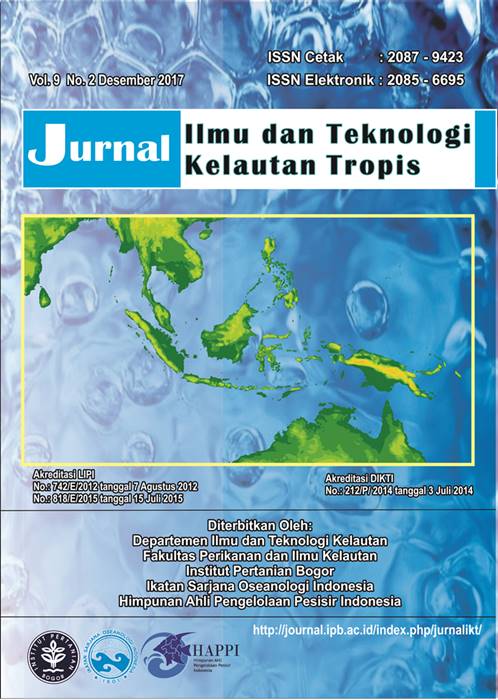THE BODY OF LOBSTER CATCHES IN PALABUHANRATU THAN THE APPLICABLE REGULATORY
Abstract
Lobster is one of the commodities that Indonesia export fisheries worth selling high. The value of selling lobster is affected by type, size, and condition or completeness of her body. Palabuhanratu is one of the centers of the lobster fishery in the South of West Java. Research on condition of fishing lobster in Palabuhanratu was done in April through November 2016 include the type, gender, number, and size (carapace length and weight) and its relationship with regulatory. Observation and measurement of the collecting is done in the lobster that come for each/sold to the warehouse by fisherman and follows directly the activities of catching lobsters. The data already obtained tabulated and analyzed. The results showed that types of lobsters captured fisherman Palabuhanratu are Panulirus ornatus, Panulirus penicillatus, Panulirus versicolor and Panulirus homarus. The majority of lobsters are caught is a kind of lobster P. homarus and P. ornatus and then followed P. penicillatus and P. versicolor. The number of the male for P. homarus, P. versicolor and P. ornatus more than females while the females of P. penicillatus more than males. The majority of the lobster weights less than 300 grams and carapace length less than 8 cm. The body condition of fishing lobster in Palabuhanratu based on the lobster fishery regulations that exist for all types of lobsters is a majority yet decent catch.
Keywords: type, lobster, Palabuhanratu, size
Downloads
The author submitting the manuscript must understand and agree that the copyright of the article manuscript must be submitted/transferred to the Jurnal Ilmu dan Teknologi Kelautan Tropis. This work is licensed under the Creative Commons Attribution-ShareAlike 4.0 (CC BY-SA) International License in which the Author and Reader can copy and redistribute the material in any media or format, and remix, modify and build material for any purpose, but they must provide appropriate credit (citing articles or content), provide a link to the license, and indicate whether there is a change. If you mix, change, or create material, you must distribute your contribution under the same license as the original.



.png)














